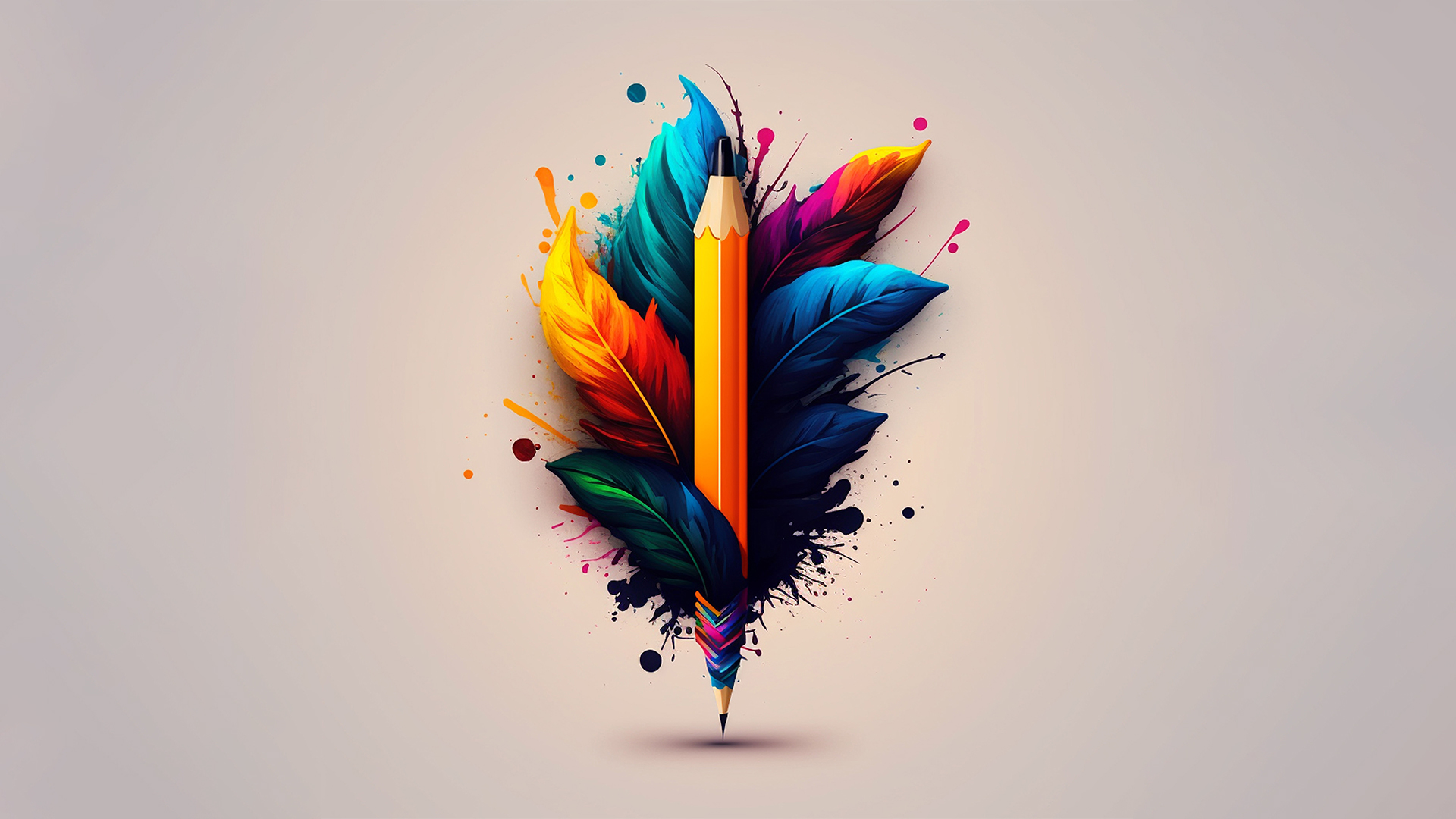Becoming a proficient graphic designer requires continuous learning, innovation, technical expertise, and practice. This all-encompassing manual will examine the methodologies, approaches, and frame of mind needed to triumph as a graphic designer.
1. Comprehend the Foundational Elements of Graphic Design: Graphic design is a field of visual communication where concepts and messages are expressed via layout, color, typeface, and images. To excel as a graphic designer, one must possess a comprehensive understanding of the foundational principles of design, which comprise:
- Typography: Acquire knowledge of typefaces, fonts, and typographic hierarchy to convey messages through text effectively.
- Color Theory: Comprehend the psychology of color and how distinct hues communicate meanings and elicit emotional responses.
- Composition and Layout: Develop aesthetically pleasing designs by investigating balance, symmetry, and visual hierarchy fundamentals.
- Branding and Identity: Gain knowledge and skills in creating unified brand identities and visual systems that effectively symbolize enterprises and organizations.
2. Acquire technical abilities: Graphic designers are required to have a firm grasp of design software. The Adobe Creative Suite comprises InDesign, Photoshop, and Illustrator, all of which are considered industry standards for developing and modifying visual content. Please learn to utilize these software programs by devoting time to your studies. An abundance of online tutorials, courses, and resources are at your disposal to assist you in mastering these applications.
Additionally, acquaint yourself with Sketch, Figma, and Canva, among other design-related software and tools, which may improve your workflow. Remain current on the latest design software updates and features to maximize their effectiveness in your projects.
3. Foster ideas and originality: The fundamental essence of graphic design is ingenuity. Develop your creative faculties by investigating many inspirations, such as artwork, design trends, nature, and mundane existence. Maintain a sketchbook or digital notebook to record design concepts, illustrations, and ideas as they occur to you. Explore a variety of design mediums, methods, and processes to broaden your creative repertoire.
Soak yourself in design-related materials, including blogs, magazines, books, and social media accounts, to maintain your motivation. Engage in design challenges and competitions, attend design events and conferences, and follow influential designers and artists to stimulate creativity and remain current on industry trends.
4. Consistent Practice: Graphic designers need to enhance their abilities. Set aside time each day or week to complete design projects, including client work, personal endeavors, and freelance assignments. Utilize design briefs, challenges, or prompts to direct your practice and expand the limits of your creativity.
Diversify your design mediums and projects to accumulate experience and construct your portfolio. Commence with rudimentary assignments and progressively advance to more intricate ones as your competence and assurance grow. It is imperative to approach design iteration and error confidently, as every iteration provides a chance for development and progress.
5. Develop a robust portfolio: A portfolio serves as a visual resume that effectively exhibits an individual’s aptitudes, artistic approach, and scope in graphic design. Compile an extensive portfolio encompassing a wide range of projects, including but not limited to logos, branding, print materials, web design, illustrations, and motion graphics. Customize your portfolio to emphasize your merits and appeal to the specific types of clients or projects you wish to acquire.
Incorporate comprehensive project descriptions and high-resolution images into your portfolio. Illustrate your problem-solving prowess and design thinking by showcasing your entire process, from beginning concepts to completed designs. Maintain an up-to-date portfolio with your most recent work and refine it consistently as your professional trajectory unfolds.
6. Solicit Feedback and Gain Knowledge from Criticism: Feedback is vital to a designer’s development. Request feedback on your design work from colleagues, mentors, and clients. Utilize constructive criticism as an opportunity to grow and gain knowledge. To obtain valuable insights into your work, engage in active listening, pose clarifying inquiries, and contemplate diverse viewpoints.
Engage in critique groups, design communities, or online forums to receive and provide feedback on the work of other designers. Participate in substantive dialogues, provide constructive criticism to fellow participants, and gain insights from their experiences and viewpoints. Iterate on your designs, hone your abilities, and improve as a designer by incorporating feedback.
7. Remain Current on Industry Trends and Tools: New trends, techniques, and tools emerge frequently in the field of graphic design, which is in a constant state of evolution. You can remain current on industry trends by participating in online communities, attending seminars and conferences, and following design blogs. Investigate novel design tools, software updates, and extensions that have the potential to augment one’s workflow and productivity.
Experiment with new design trends and incorporate them into your work when applicable. However, remember the importance of balancing trendiness and timeless design principles to produce designs that endure over time. Adopt a curiosity, flexibility, and receptiveness attitude to welcome innovation and change into the dynamic realm of graphic design.
8. Foster Professionalism and Soft Skills: Cultivate soft skills, including problem-solving, collaboration, communication, and time management, in addition to technical expertise. Effective communication is vital to comprehending client requirements, presenting ideas, and collaborating with colleagues. One can establish robust client relationships and consistently produce outstanding outcomes by employing active listening, clear articulation, and empathy.
Maintain a professional demeanor when interacting with stakeholders, consumers, and colleagues. Maintaining open communication channels, adhering to deadlines, and fulfilling commitments are all essential components of the design process. Accept constructive criticism with composure, accept responsibility for your work, and aspire to achieve excellence in all you undertake.
9. Establish and Maintain Relationships: To progress in your field as a graphic designer, networking is an absolute necessity. Develop relationships with industry professionals, prospective clients, and fellow designers. Participate in design events, conferences, and meetings to socialize with individuals who share your interests, share insights, and uncover fresh prospects for cooperative endeavors.
Utilize online forums, design organizations, and social media to interact with the design community. Participate in discussions, distribute your work, and add value to the community. Beyond mere self-promotion, networking encompasses establishing significant connections, providing assistance to others, and cultivating a collaborative and supportive atmosphere within the design community.
10. Continuous Learning and Development: The process of honing one’s skills as a graphic designer is continuous. Engage in continuous professional development and lifelong learning to maintain your field’s relevance and competitiveness. Acquire certifications, seminars, and courses to augment your expertise and skill set. Maintain a curious mindset, investigate novel design disciplines, and challenge yourself to venture beyond your comfort zone.
Embrace challenges as learning and development opportunities. Be flexible and open to change in response to technological advancements, industry developments, and client requirements. Seek mentors and role models, develop a growth mindset, and surround yourself with individuals who motivate and inspire you to achieve greater heights in your design career.
To conclude, developing into a proficient graphic designer necessitates unwavering determination, fervor, and an ongoing commitment to growth. Successfully entering the field of graphic design requires several key components: mastery of design fundamentals, refinement of technical abilities, development of creativity, solicitation of feedback, awareness of industry trends, and establishment of professional connections.

















